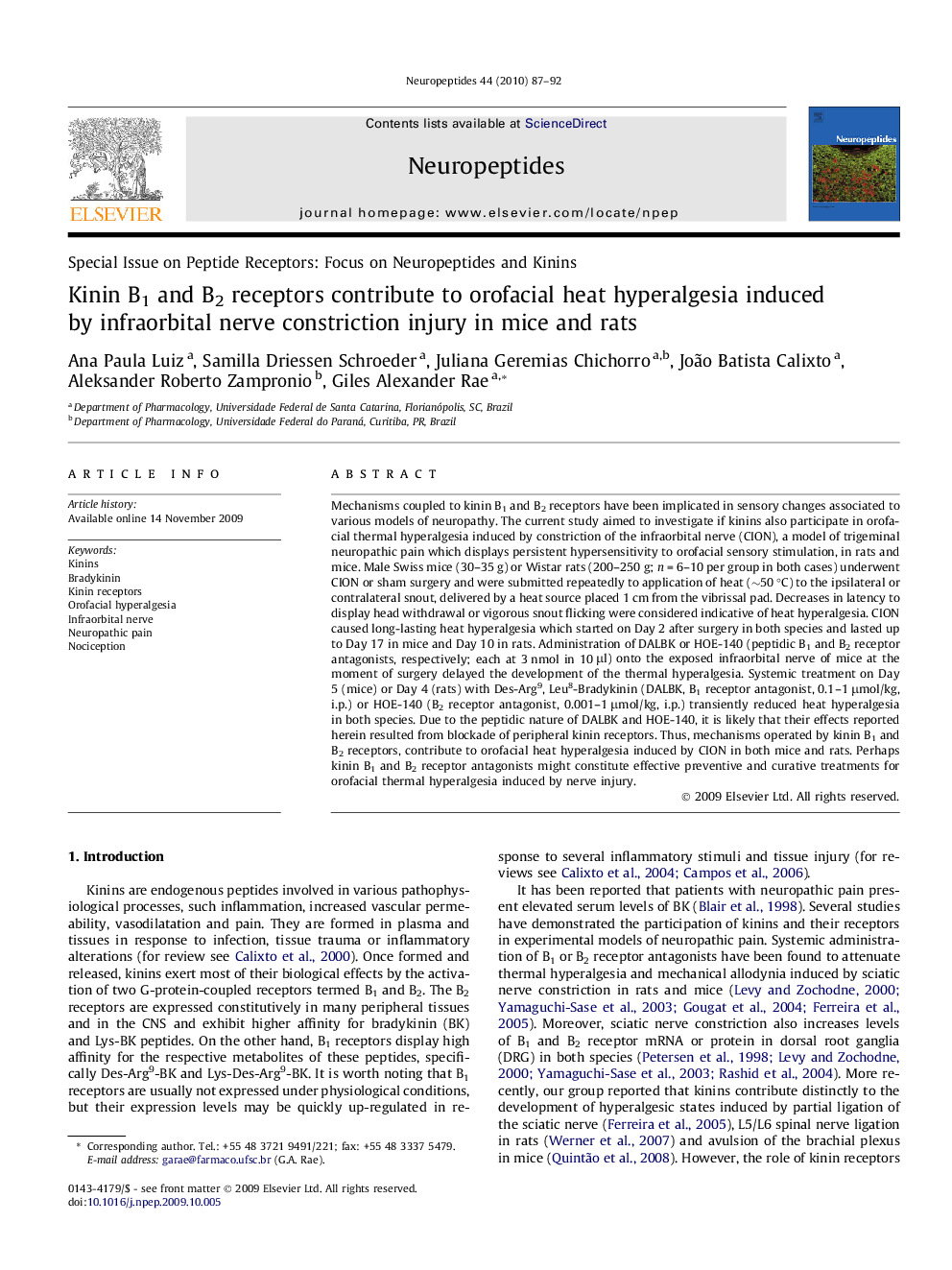| کد مقاله | کد نشریه | سال انتشار | مقاله انگلیسی | نسخه تمام متن |
|---|---|---|---|---|
| 2808231 | 1157743 | 2010 | 6 صفحه PDF | دانلود رایگان |

Mechanisms coupled to kinin B1 and B2 receptors have been implicated in sensory changes associated to various models of neuropathy. The current study aimed to investigate if kinins also participate in orofacial thermal hyperalgesia induced by constriction of the infraorbital nerve (CION), a model of trigeminal neuropathic pain which displays persistent hypersensitivity to orofacial sensory stimulation, in rats and mice. Male Swiss mice (30–35 g) or Wistar rats (200–250 g; n = 6–10 per group in both cases) underwent CION or sham surgery and were submitted repeatedly to application of heat (∼50 °C) to the ipsilateral or contralateral snout, delivered by a heat source placed 1 cm from the vibrissal pad. Decreases in latency to display head withdrawal or vigorous snout flicking were considered indicative of heat hyperalgesia. CION caused long-lasting heat hyperalgesia which started on Day 2 after surgery in both species and lasted up to Day 17 in mice and Day 10 in rats. Administration of DALBK or HOE-140 (peptidic B1 and B2 receptor antagonists, respectively; each at 3 nmol in 10 μl) onto the exposed infraorbital nerve of mice at the moment of surgery delayed the development of the thermal hyperalgesia. Systemic treatment on Day 5 (mice) or Day 4 (rats) with Des-Arg9, Leu8-Bradykinin (DALBK, B1 receptor antagonist, 0.1–1 μmol/kg, i.p.) or HOE-140 (B2 receptor antagonist, 0.001–1 μmol/kg, i.p.) transiently reduced heat hyperalgesia in both species. Due to the peptidic nature of DALBK and HOE-140, it is likely that their effects reported herein resulted from blockade of peripheral kinin receptors. Thus, mechanisms operated by kinin B1 and B2 receptors, contribute to orofacial heat hyperalgesia induced by CION in both mice and rats. Perhaps kinin B1 and B2 receptor antagonists might constitute effective preventive and curative treatments for orofacial thermal hyperalgesia induced by nerve injury.
Journal: Neuropeptides - Volume 44, Issue 2, April 2010, Pages 87–92